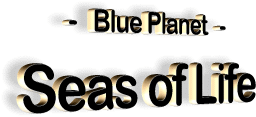|
from WatchDocumentary Website
Although the oceans comprise two-thirds of planet Earth, much of
what goes on beneath their surface remains shrouded in mystery, and
most certainly soaking wet.
Near a Pacific seamount, there is a large concentration of marine animals because when the current makes contact with the submerged rock, it forces upwards plankton and other organisms.
This in turn attracts other fish to the area that are higher up the food chain, like tuna, and those that are higher still, such as silky sharks.
Off South Africa, a similar situation occurs every June when sardines migrate and are pursued by a caravan of various predators. The South Atlantic waters are the roughest, and storms also churn up nutrients to the surface. These feeding grounds have led to the world's largest albatross breeding colony, on Steeple Jason Island, west of the Falklands.
Phytoplankton forms the basis of all sea life, and every night some 1,000 million tonnes of creatures ascend from the deep to search for food. Lunar phases can also have a bearing on events and the mass arrival of Ridley sea turtles on a Costa Rican beach is shown.
Herring initiate the most
productive food chain, providing sustenance for humpback whales, and Steller's and California sea lions. In addition, their eggs are
nutrition for many, both above and in the sea.
For other Episodes of the Series: http://watchdocumentary.com/search.php?keywords=The+Blue+Planet+-+Episode+03&btn=
|
